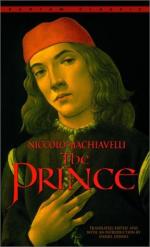|
This section contains 401 words (approx. 2 pages at 300 words per page) |
Shelley Compared to Keats
Keats poem uses autumn to portray the mind and life of man. Life is viewed as the process of aging, decay, and death. The first stanza there is a sense of ripeness as fall is beginning to approach, and Summer is ending. Under the "maturing sun" indicates nature at its full bloom. Keats sees summer as his climactic time of life. By the second stanza, Keats has reached his "last oozings," or his last moments of summer, which he views as the climactic time of his life. Autumn is beginning to arrive and winter, or death, is approaching soon after. The last stanza asks, "Where are the songs of Spring? Ay, where are they"" Or, where are Keats' carefree younger days? He says, "barred clouds bloom the soft-dying day," he is resisting the death he sees approaching. The poem is relates nature to the closure of the season, while it is the closure of the author's life.
Shelley uses the wind in his poem as a spirit, and concentrates on the aspect that the wind causes death or darkness. In the first two stanzas of the poem, there are comparisons of "dead leaves" to "ghosts" and "winged seeds" to dead bodies that "lie cold and low... within its grave." The author comes to associate the season of autumn with these dismal, violent thoughts. He sees the Autumn season of a time of aging, and of a "dying year." As the poem progresses, Shelley starts describing images of peace and serenity. He talks about the "blue Mediterranean" and "summer dreams." By the final stanzas of the poem, Shelley, wants to use the winds evil power to create a new beginning. "Drive my dead thoughts over the universe Like withered leaves to quicken a new rebirth!" He feels that good can come through evil, therefore, respects the wind changing him.
As mentioned above, both Romantic poets used the season of Autumn to portray the seasons of life. Though as seen through the works, they interpreted the outcome differently. Keats' poem spoke of aging and death, whereas Shelley's spoke of rebirth and rejuvenation.
|
This section contains 401 words (approx. 2 pages at 300 words per page) |


